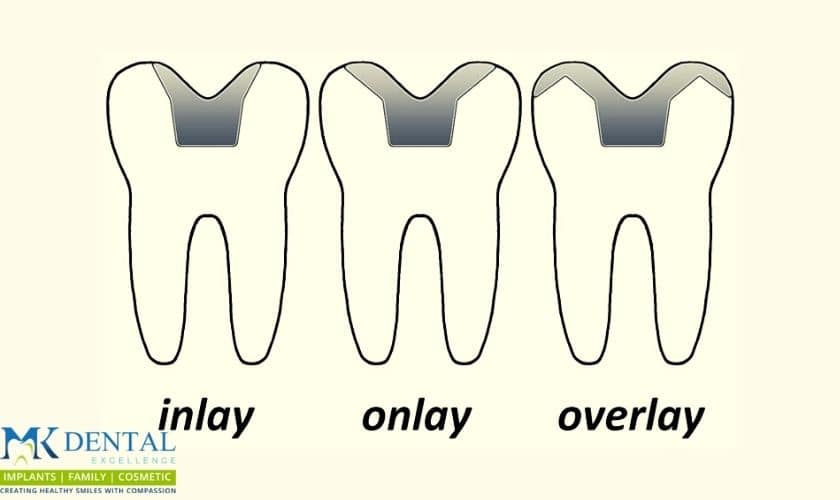
IA damaged tooth can affect an individual a lot. No one wants to show off their teeth that have been broken, chipped, missing, or have been decaying for the last few years. An ultimate solution for such people includes cosmetic dentistry techniques such as Dental Inlays and Dental Onlays. Dental Onlays and Inlays have been gaining popularity for the last few years. It is making deeper inroads into the field of cosmetic dentistry. Cosmetic dentists are increasingly considering this restorative dental procedure for restoring their damaged teeth.
Difference between Dental Inlays and Dental Onlays
Dental Inlays and Onlays are usually quite bigger than dental fillings at the same time, they are smaller than crowns. It is usually put in place by cementing or bonding. There is only a minor difference between both inlays and Onlays. The inlay procedure is similar to that of a filling. But it is bonded within the cusps of the chewing surface of the teeth. Dental Onlays cover a vast surface and it usually requires the removal of one or more cusps that have been decayed. It lasts longer as it is made up of materials such as gold, ceramics, or composite resin. Regular dental checkups can prevent the accumulation of plaque and decaying of teeth to a greater extent. The healthier your teeth are, the less the need for dental inlays and dental Onlays. The durability of the inlays and Onlays depends a lot on the material being used, the teeth in which Inlays and Onlays are going to be performed, the force that you give for chewing, and also depends on how neatly good oral hygiene is maintained by the individual.
Advantages of Dental Inlays and Dental Onlays
- They are much harder and stronger compared to other types of filling materials
- Depending on your tooth, you can choose the materials that are available in different colors
- If maintained properly, it lasts longer and can be very well kept free from tooth decay
- It is also one of the best alternatives to dental crowns
Procedure
The treatment usually can be completed in two appointments. The dentist will try to remove the decayed area first or remove the filling to prepare the surface for a new filling. During the first appointment, the dentist will take an impression of the surface and the impression will be then sent to the technician. Till the inlays and Onlays are received, the dentist will place a temporary filling as a means to protect the surface on which the Inlays and Onlays need to be done. Upon receiving the Inlays or Onlays, the dentist ensures that it fits perfectly on the surface. Once the dentist ensures that the bite is precise, they will then glue it with a strong bonding adhesive material.


